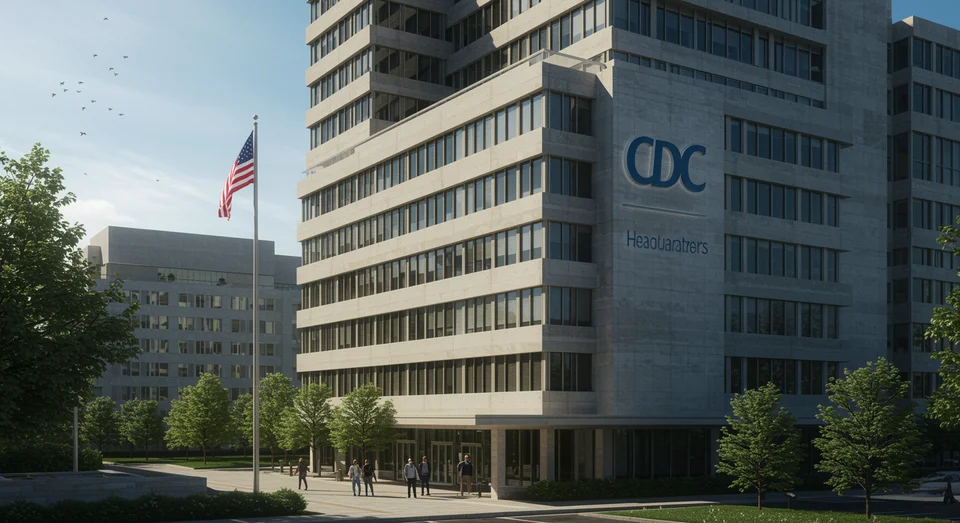CDC Considers Targeted COVID-19 Vaccine Strategy Amid Agency Restructuring Under Robert F. Kennedy Jr.
157 views
The CDC's vaccine advisory committee convened this week to deliberate a pivotal shift in the nation’s COVID-19 vaccination strategy for the 2025–2026 cycle, signaling a move away from universal recommendations in favor of a more targeted approach. Under consideration is a policy that would prioritize vaccination for high-risk groups, including older adults, pregnant women, healthcare workers, and individuals with pre-existing medical conditions, while scaling back recommendations for younger, healthier populations. This meeting also coincides with broader discussions on vaccine protocols for diseases like meningococcal meningitis, RSV, chikungunya, and HPV, as well as an urgent review of measles outbreak containment strategies. Against this backdrop, Health and Human Services Secretary Robert F. Kennedy Jr. is spearheading a sweeping reorganization of the CDC, aiming to streamline its focus on infectious diseases while delegating chronic disease management to a newly formed agency.

A Pivotal Moment in Vaccine Policy and Public Health Strategy
The proposed recalibration of the COVID-19 vaccine strategy marks a significant departure from the universal vaccination campaigns that defined earlier phases of the pandemic. Universal recommendations, while critical during the height of the crisis, have faced increasing scrutiny as the virus transitions into an endemic phase. The advisory committee’s discussions reflect a growing consensus that a one-size-fits-all approach may no longer align with the evolving risk landscape.
Under the new model, older adults would remain a priority for vaccination due to their heightened vulnerability to severe outcomes. However, for younger populations, the focus would shift to those with specific risk factors, such as pregnant individuals or those with underlying health conditions. Healthcare workers, given their critical role in managing outbreaks and their exposure to infectious diseases, would also remain a key demographic for immunization efforts.
This shift raises both practical and philosophical questions about public health equity and resource allocation. Critics of universal vaccination have argued that it diverts resources from those who need them most, while proponents caution against creating barriers to access that could exacerbate health disparities. The committee’s deliberations will likely weigh these competing concerns, seeking a balance that protects public health without overburdening systems or alienating underserved communities.
The discussions are not limited to COVID-19. The committee is also revisiting guidelines for other vaccines, including those targeting meningococcal disease and RSV in adults. The inclusion of chikungunya—a mosquito-borne virus that has seen sporadic outbreaks in tropical regions—signals a proactive approach to emerging infectious threats. Meanwhile, ongoing measles outbreaks have reignited debates about vaccine hesitancy and the need for robust immunization programs to prevent the resurgence of once-controlled diseases.
CDC Restructuring: A New Chapter Under Kennedy’s Leadership
Overshadowing these discussions is the broader transformation of the CDC itself, orchestrated by Health and Human Services Secretary Robert F. Kennedy Jr. In a move that has drawn both praise and skepticism, Kennedy is steering the agency toward a more focused mandate on infectious diseases. Divisions dealing with chronic illnesses, such as diabetes and heart disease, are being transferred to the newly established Administration for a Healthy America.
Kennedy’s reorganization reflects a broader critique of the CDC’s response to the COVID-19 pandemic, which some argue was hampered by an overly expansive scope that diluted its effectiveness. By narrowing its focus, the CDC could potentially respond more nimbly to infectious disease threats. However, the shift raises concerns about the fragmentation of public health efforts, particularly as chronic diseases remain leading causes of death in the United States.
The timing of this restructuring is particularly striking. As the nation grapples with the long-term impacts of the pandemic, including the rise of “long COVID” and its implications for chronic disease, the division of responsibilities between the CDC and the Administration for a Healthy America will likely come under intense scrutiny. Critics worry that the new agency may lack the institutional knowledge and resources to address these challenges effectively, while proponents argue that it could bring fresh perspectives and innovations to the field.
A Broader Reflection on Public Health in Transition
The CDC’s vaccine advisory committee meeting and the agency’s ongoing reorganization come at a moment of profound transition for public health in the United States. The pandemic has reshaped societal attitudes toward vaccines, public health infrastructure, and the role of government in managing crises. These changes are unfolding against a backdrop of rising political polarization, which has further complicated efforts to build consensus around public health policies.
The proposed shift to a risk-based vaccination strategy underscores the need for nuanced approaches that reflect the complexities of a post-pandemic world. It also highlights the importance of clear, consistent communication to maintain public trust, particularly as misinformation continues to erode confidence in vaccines and other health interventions.
At the same time, the broader restructuring of the CDC raises fundamental questions about the future of public health in America. Can a more specialized CDC effectively address the dual challenges of infectious and chronic diseases, or will the fragmentation of responsibilities create new vulnerabilities? As these changes take shape, the stakes could not be higher.
In the end, the decisions made in these deliberations will reverberate far beyond the walls of the CDC. They will shape not only the nation’s response to COVID-19 and other infectious diseases but also its ability to navigate the broader health challenges of the 21st century. Whether these changes will lead to a more resilient and equitable public health system remains to be seen, but one thing is clear: the path forward will require both bold vision and careful stewardship.
